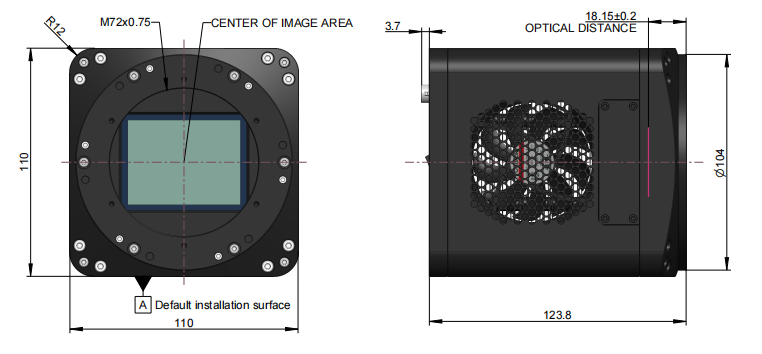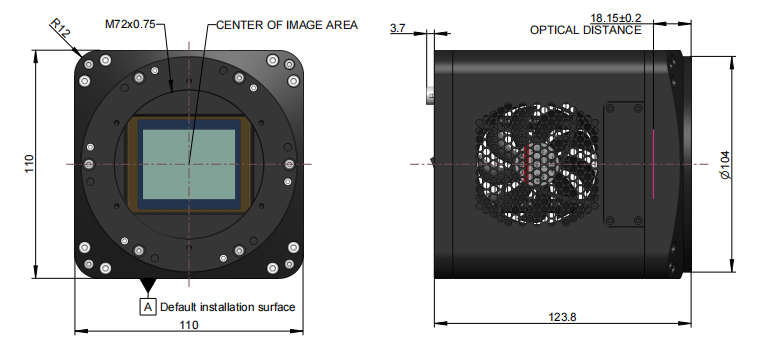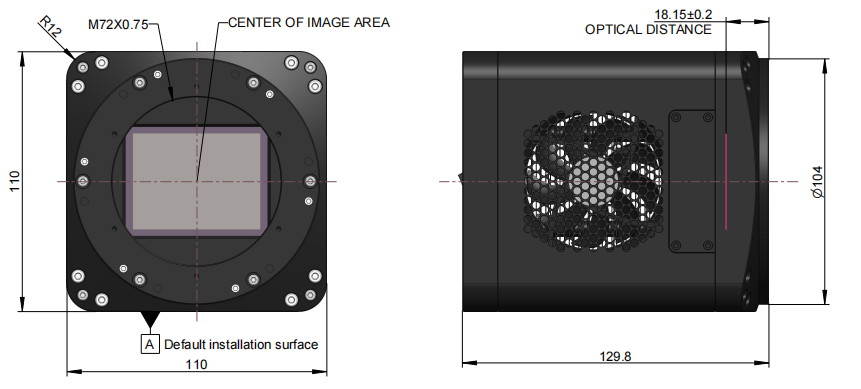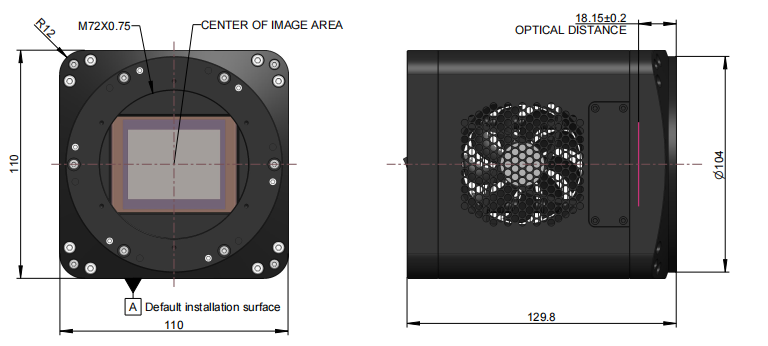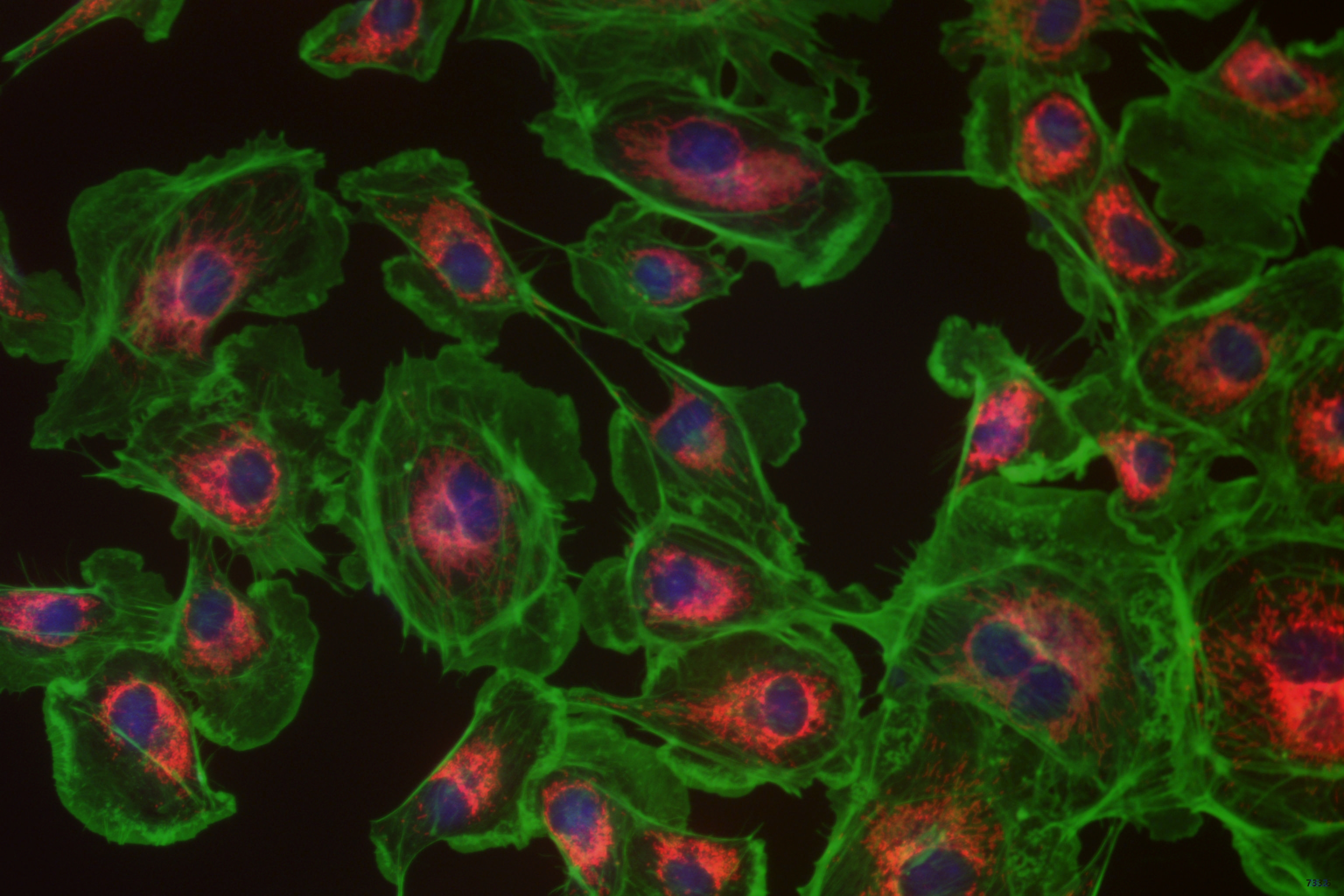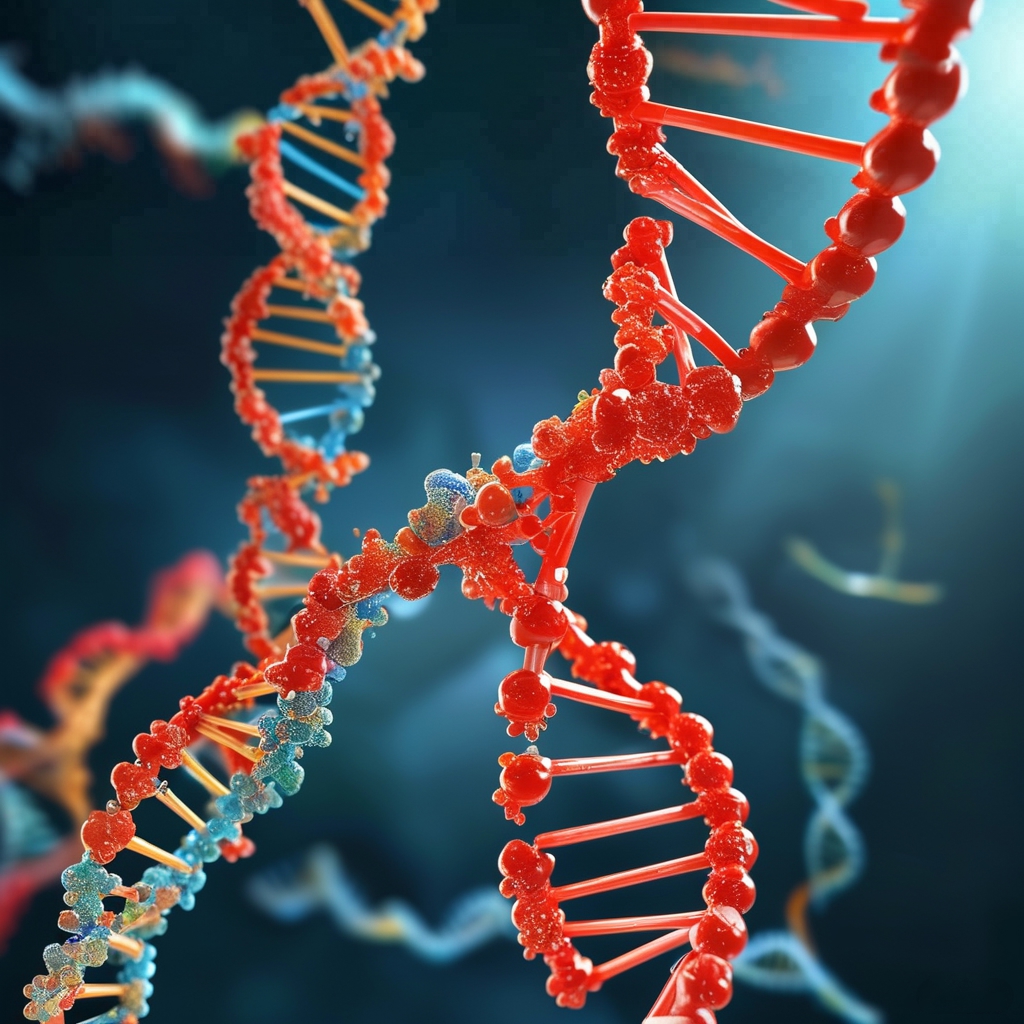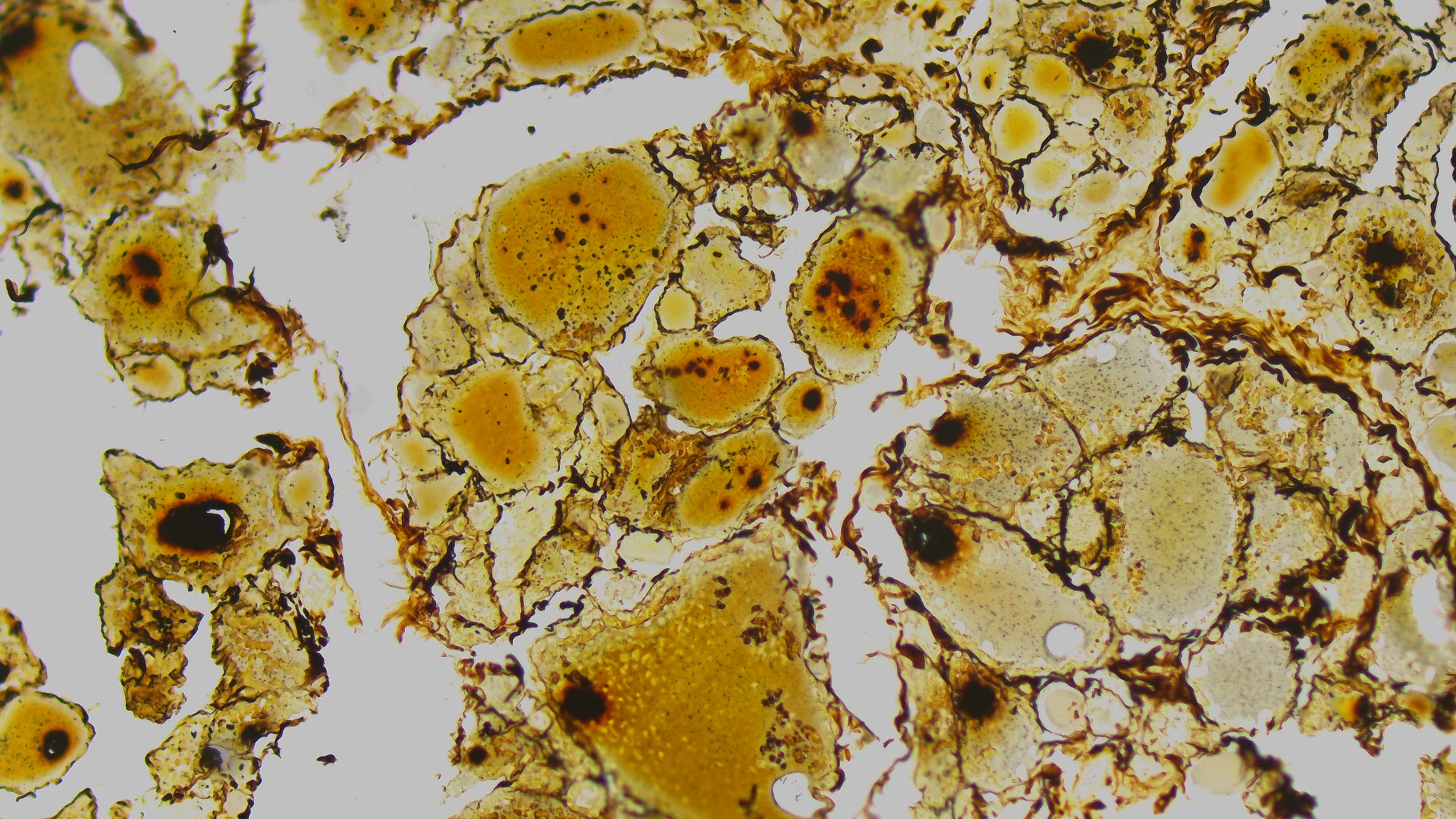MAX (Sony | High Resolution)
Product Introduction
Based on Sony Exmor large-format sCMOS sensors (IMX811/411/461/455/410, etc.), covering full-frame to medium-format resolutions from 24 MP to 251 MP. The cameras feature high-efficiency TEC deep cooling with closed-loop temperature control (typical ΔT ≈ 40 °C), combined with anti-condensation optical structure to maintain low dark current and stable black level under low-light and long-exposure conditions. 10GigE/USB3.0 multi-interface options with built-in buffer (model-dependent) ensure high bandwidth and continuous long-term acquisition. Support free-running, software/hardware triggering, and multi-camera synchronization, suitable for microscopy stitching, cultural heritage imaging, surveying and mapping, semiconductor inspection, astronomical observation, and other ultra-high-resolution scenarios. Cross-platform SDK and ToupView/ToupLite software provided for system integration and secondary development.
Product Features
- Resolution coverage: 24–251 MP, pixel size 2.81–5.94 µm (model-dependent)
- Large sensor format: Full-frame/medium-format, M54/M72 high-strength mounts (model-dependent)
- Deep TEC cooling (typical ΔT ≈ 40 °C) + anti-condensation structure, supports low-light and long-exposure applications
- Multi-interface: 10GigE/USB3.0, supports built-in buffer and continuous acquisition (model-dependent)
- Multi-bit depth output: 8/10/12/16-bit (model-dependent) for richer detail and dynamic range
- Triggering and I/O: Opto-isolated input/output + GPIO; free-running/software-hardware triggering/multi-camera synchronization
- Image functions: ROI, binning, orientation flip, etc. (model-dependent)
- Software and SDK: ToupView/ToupLite; Windows/Linux/macOS multi-language SDK (C/C++/C#/Python, etc.)
- Typical applications: Microscopy stitching, cultural heritage and scientific imaging, remote sensing and surveying, semiconductor inspection, astronomical imaging
Product Models
Choose the best MAX (Sony | High Resolution) model for your application needs
| Model | Sensor | Resolution | Pixel Size | Frame Rate | Data Interface | Dynamic Range | Action |
|---|---|---|---|---|---|---|---|
| MAX251AM-10G |
IMX811ALR (M, RS)
66.24 mm × 44.16 mm
|
251 MP (19200×12800) | 2.81 µm × 2.81 µm |
1.5 fps @ 19200×12800
|
10GigE |
-
|
View Details |
| MAX251AC-10G |
IMX811AQR (C, RS)
66.24 mm × 44.16 mm
|
251 MP (19200×12800) | 2.81 µm × 2.81 µm |
1.5 fps @ 19200×12800
|
10GigE |
-
|
View Details |
| MAX151AM-10G |
IMX411ALR (M, RS)
53.30 mm × 40.01 mm
|
151 MP (14176×10640) | 3.76 µm × 3.76 µm |
6.1 fps @ 14176×10640
6.9 fps @ 7072×5320
20.8 fps @ 4704×3546
61.9 fps @ 1568×1178
|
10GigE |
-
|
View Details |
| MAX151AC-10G |
IMX411AQR (C, RS)
53.30 mm × 40.01 mm
|
151 MP (14176×10640) | 3.76 µm × 3.76 µm |
6.1 fps @ 14176×10640
6.9 fps @ 7072×5320
20.8 fps @ 4704×3546
61.9 fps @ 1568×1178
|
10GigE |
-
|
View Details |
| MAX102AM-10G |
IMX461ALR (M, RS)
43.80 mm × 32.87 mm
|
102 MP (11648×8742) | 3.76 µm × 3.76 µm |
8.7 fps @ 11648×8742
8.7 fps @ 5824×4370
27.8 fps @ 3872×2912
82.5 fps @ 1280×970
|
10GigE |
-
|
View Details |
| MAX102AC-10G |
IMX461AQR (C, RS)
43.80 mm × 32.87 mm
|
102 MP (11648×8742) | 3.76 µm × 3.76 µm |
8.7 fps @ 11648×8742
8.7 fps @ 5824×4370
27.8 fps @ 3872×2912
82.5 fps @ 1280×970
|
10GigE |
-
|
View Details |
| MAX151AM-U3 |
IMX411ALR (M, RS)
53.30 mm × 40.01 mm
|
151 MP (14176×10640) | 3.76 µm × 3.76 µm |
2.4 fps @ 14176×10640
6.9 fps @ 7072×5320
20.8 fps @ 4704×3546
61.9 fps @ 1568×1178
|
USB3.0 |
-
|
View Details |
| MAX151AC-U3 |
IMX411AQR (C, RS)
53.30 mm × 40.01 mm
|
151 MP (14176×10640) | 3.76 µm × 3.76 µm |
2.4 fps @ 14176×10640
6.9 fps @ 7072×5320
20.8 fps @ 4704×3546
61.9 fps @ 1568×1178
|
USB3.0 |
-
|
View Details |
| MAX102AM-U3 |
IMX461ALR (M, RS)
43.80 mm × 32.87 mm
|
102 MP (11648×8742) | 3.76 µm × 3.76 µm |
3.5 fps @ 11648×8742
8.7 fps @ 5824×4370
27.8 fps @ 3872×2912
82.5 fps @ 1280×970
|
USB3.0 |
-
|
View Details |
| MAX102AC-U3 |
IMX461AQR (C, RS)
43.80 mm × 32.87 mm
|
102 MP (11648×8742) | 3.76 µm × 3.76 µm |
3.5 fps @ 11648×8742
8.7 fps @ 5824×4370
27.8 fps @ 3872×2912
82.5 fps @ 1280×970
|
USB3.0 |
-
|
View Details |
| MAX62AM |
IMX455 (M, RS)
35.98 mm × 23.99 mm
|
61 MP (9568×6380) | 3.76 µm × 3.76 µm |
6.1 fps @ 9568×6380 (16-bit)
19.1 fps @ 4784×3190
55.6 fps @ 3184×2124
191 fps @ 1040×706
|
USB3.0 |
88.3 dB
|
View Details |
| MAX62AC |
IMX455 (C, RS)
35.98 mm × 23.99 mm
|
61 MP (9568×6380) | 3.76 µm × 3.76 µm |
6.1 fps @ 9568×6380 (16-bit)
19.1 fps @ 4784×3190
55.6 fps @ 3184×2124
191 fps @ 1040×706
|
USB3.0 |
85.8 dB
|
View Details |
| MAX24AC |
IMX410 (C, RS)
36.02 mm × 24.00 mm
|
24 MP (6064×4040) | 5.94 µm × 5.94 µm |
15.3 fps @ 6064×4040 (14-bit)
41 fps @ 3024×2012
114 fps @ 2016×1342
|
USB3.0 |
87.3 dB
|
View Details |
Packing List #
Standard accessories and packing details for the cooled MAX series (USB3 / 10GigE)
- Camera body (MAX series USB3 · cooled)
- Power adapter (input AC 100–240 V, 50/60 Hz; output per included label)
- I/O cable (7-pin or extension cable)
- USB 3.0 data cable (length/connector per shipment)
- Lens (optional: M72 / M52 / M42 / C-mount; not included by default)
- Camera body (MAX series 10GigE · cooled)
- Power adapter (input AC 100–240 V, 50/60 Hz; output per included label)
- I/O cable (7-pin or extension cable)
- 10GigE Ethernet cable (Cat6A/7 shielded recommended)
- Lens (optional: M72 / M52 / M42 / C-mount; not included by default)
Product Dimensions #
MAX series Outline dimensions (USB3 / 10GigE · cooled)
Frequently Asked Questions
Learn more about scientific CMOS cameras
- Ultra-low read noise: sCMOS read noise approaches 1 e⁻, far outperforming traditional CCDs.
- High frame rate: Parallel readout architecture supports 100 fps or higher.
- Wide dynamic range: Captures bright and dark regions simultaneously with ratios up to tens of thousands to one.
- Large field of view and high resolution: Suits high-resolution, wide-field imaging.
EMCCD cameras excel in ultra-low light or long-exposure conditions.
sCMOS delivers greater value for high-resolution, high-speed imaging with low noise.
In-Depth Product Overview
sCMOS Sensor Architecture
Each pixel has its own amplifier and column ADC for parallel readout, enabling high-speed, high-SNR imaging. Dual gain channels and dual ADC designs further expand dynamic range and sensitivity.
Low Noise + Wide Dynamic Range
Typical sCMOS noise is < 2 e⁻ (30 fps) with dynamic range up to 50,000:1—far exceeding traditional CCDs.
Fast Readout & Versatility
Parallel readout supports >100 fps for capturing fast events such as cell motion, fluorescence lifetime studies, and plasma dynamics.
Low-Light Performance
Back-illuminated sCMOS sensors achieve >95% QE from UV to NIR, with low fixed-pattern noise and cooling down to −30 °C for astronomy and other needs.
Application Scenarios & System Value
Ideal for fluorescence microscopy, astronomy, cold atom research, X-ray imaging, materials inspection, and industrial microscopy—delivering high sensitivity, precision, and adaptability.
Key Application Areas
Representative sCMOS applications
sCMOS Technology Advantages Summary
- Ultra-low read noise (<2 e⁻)
- High frame rate (>100 fps)
- Wide dynamic range (50,000:1)
- High quantum efficiency (>95%)
- Large FOV, high resolution
- Cooling capability (−30 °C)
- Parallel readout architecture
- Adaptable to diverse research needs







